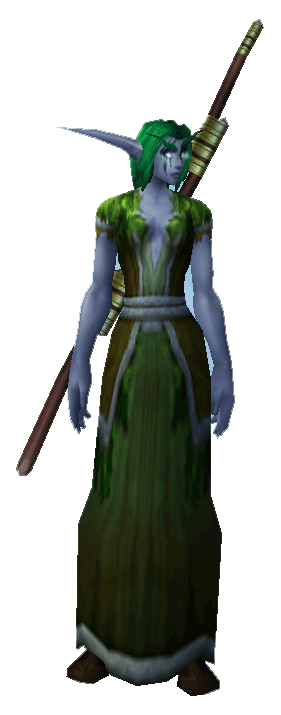I have been reading slowly but surely through James Paul Gee’s What Video Games Have To Teach Us about Learning and Literacy over the last six months. The following is based on notes I took for my research journal while reading Chapter 3 on learning and identity. In particular, I focus on the notion of the tripartite identity and what that means to me in the real world and in the virtual world in which I play.
Role playing games involve three identities: you, the real-world person, who is playing a role-played character; the role-played character, a virtual identity played by you; and a projective identity, the interface between you and the virtual identity, where you project your values onto the virtual character and see the virtual character as a personal project under your control. This is Gee’s notion of the tripartite identity. Gee differentiates between these by emphasizing different parts of the phrase “James Paul Gee as Bead Bead”. “James Paul Gee as Bead Bead” is the real-world Gee. “James Paul Gee as Bead Bead” is the virtual world character. Finally, “James Paul Gee as Bead Bead” is the projective identity.
The projective identity involves meta-reflection. You consider what kind of “person” you want your role-played character to be. Gee (2007, p. 51) comments that “A good role-playing video game makes me think new thoughts about what I value and what I do not.” The virtual character’s history and future is all part of the projective identity. “[you] feel responsible to and for the character.” (p. 53)
“When you have chosen a video game well, the virtual world it allows you to live in is quite compelling.” (Gee 2007, p. 59) Gee asserts that if the virtual world and the player’s virtual identity are not compelling then little deep learning will occur, because the player is not invested in mastering the domain. That is, they see little point or reward to investing effort, time, or practice required for domain mastery. What makes the realm compelling varies from player to player and even at different times. I know from my own experience that I initially was enthralled by the amazing and expansive world created in World of Warcraft. These days, however, I am interested in teamwork and achieving goals, so I spend very little time admiring the fantastic scenery or engaging in exploration.
If the virtual identity and world map onto your real world identity and experiences, that also helps make a game compelling. As an educator who specializes in online distance education, part of my key real-world identity is community builder. One of the first things I did in World of Warcraft was create a guild and start building a community. I later expanded on that by helping form and run an alliance of social guilds, an even larger community. People and the ability to help people was a strong compelling factor that the game afforded me, bridging my real-world and virtual identities.
It is clear how the game itself was able to map onto my real-world skills and identity, but it is probably not so obvious how that is woven into my virtual identity. My first character, which I still primarily use, was Elsheindra, a night elf druid. As Michelle, I am keenly interested in helping people, which is why I enjoy teaching so much. As Elsheindra, I could be a restoration druid, a healer. Not only does this enable me to help people by healing them or making them stronger, it ties into my original desire to be a doctor. As Michelle who grew up in Canada and spent a lot of time hiking and camping, I have a deep love for trees and green, something I think is epitomized by the druid class, as druids in the game lore are keepers of the world and masters of nature, similar to Celtic associations. As a result, Elsheindra, for many years, did not kill things. Partially because healing druids were really poor at it, but also because I didn’t think it was appropriate for a healer to be gratuitously taking lives when she is supposed to be devoted to saving them. That was not who I wanted Elsheindra to be, a clear example Gee’s projective identity.
References:
- Gee, J.P. (2007) What Video Games Have To Teach Us About Learning and Literacy, 2nd edition, New York, NY, United States, Palgrave Macmillan.
Images:
- Elsheindra the Druid ©Blizzard Entertainment, Inc.
- Druid Temple ©Phil Catterall licensed for reuse under CC-BY-SA.









